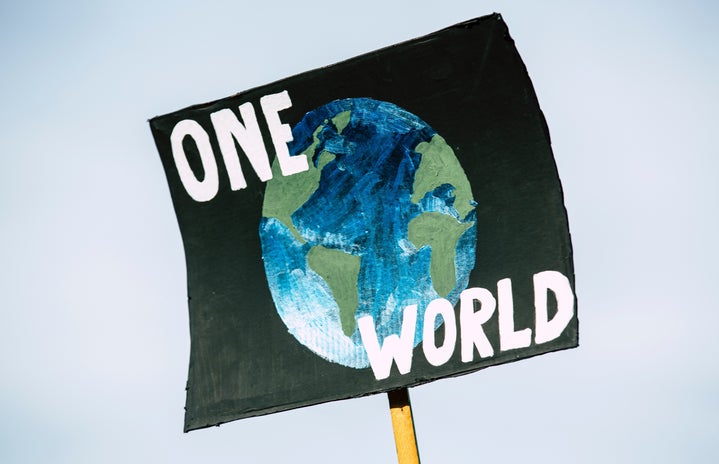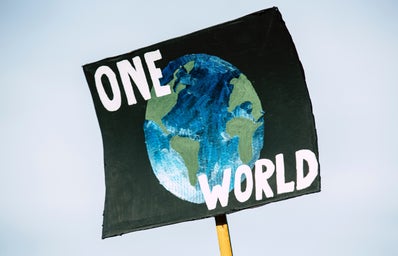In the third grade, my best friend told me she’d just returned the saddest book she’d ever read to our elementary school library. In want of a good cry, I borrowed it next. It was about endangered species. Desperately wanting to save the turtles and tigers, I begged my parents to donate to the cause. “Charity?” My Asian parents acted as if I’d asked to move to Australia. “WE’RE the ones that need charity.”
I didn’t bring the issue up to them again. Instead, I co-created “W.A.T.C.H.” with a close friend; a school club with the mission of raising funds for various causes (water, animals, trees, children, healthcare). Naming the club “W.A.T.C.H.” bestowed an extreme sense of responsibility onto us, because standing by meant watching the world run its course for the worse. Yes, terribly guilt-trippy.
The sustainability movement rose online as high school came around. However, it felt too overwhelming to participate alongside newfound teenage stresses and responsibilities. I hadn’t realized what a privilege it was to have the mental space to care and suddenly understood why my parents never jumped on the sustainability train with me. But as sustainability becomes an integral facet of our survival as a collective, it becomes an issue we cannot afford to ignore— while still being an issue many can’t afford to pay attention to. Is it possible for sustainability to be accessible for everyone in a feasible way?
What’s Causing Climate Change?
Two major culprits of climate change are our food systems (responsible for about 25 percent of greenhouse gas emissions) and a few oil and gas companies (responsible for about 71 percent of emissions). Climate change is mostly in the hands of governments to regulate fossil fuel companies and provide aid to energy production in developing countries. “If our governments don’t act, measures taken by individuals are a bit like pointing a garden hose at a forest fire.”
Why We Need To Recycle
The simplest and most effective thing a community can do to combat this (besides voting), is eliminate waste. 42 percent of greenhouse gas emissions are linked to the production and use of goods. By enforcing proper recycling, a city could 1) keep waste from landfills and incinerators, 2) provide manufacturers with recycled instead of raw materials, and 3) save energy manufacturing (for example, an aluminum can uses 20 times less energy to make from recycled rather than raw materials). While it’s up to you to recycle, it’s ultimately up to a city to uphold recycling guidelines.
What can one person do?
You may have heard of Lauren Singer, the Environmental Studies student from NYU who went viral for fitting one year’s waste in a mason jar. She simply assessed all of her waste, transitioned to second-hand shopping, and remade every product that came in a wasteful package herself. Since then, Singer has created a blog and shop to educate and increase accessibility for zero waste living. Yes, she is a star. And no, if this isn’t your life’s sole dedication, it’s unrealistic to be perfectly zero waste (for the average Canadian, that’s eliminating 36.1 tonnes of waste a year). For many, this is a time and emotionally consuming process. It’s easy to judge someone for shopping affordable mass retail and ignore the fact that sustainable options are limited for those with constrained budgets and schedules.
How To Save The Animals While Having Bacon
Besides waste, animal agriculture is the second leading cause of climate change. It’s the leading driver of extinction and biodiversity loss, deforestation, and water pollution. So should we all go vegan? Or at least vegetarian? There might be an easier solution, according to Suzy Amis Cameron (wife of film director James Cameron). Cameron is the founder of OMD, a movement and organization that promotes eating one plant-based meal a day. By having at least one plant-based meal a day, we can “cut our personal water and carbon footprint in half”. In one year, this would be the greenhouse gas emission equivalent of driving from New York to San Francisco. If a couple adopted this for a year, they would save about 337,100 gallons of water— half the water of an Olympic-size swimming pool. Meat and dairy overconsumption is also linked to heart disease, diabetes, obesity and cancers, which implementing a partially vegetarian or vegan diet can reduce the risk of. “According to a study by Harvard researchers, swapping just three percent of processed red meat for plant proteins reduces your chances of an early death by 34 percent.”
In a perfect world, we’ll have eliminated fossil fuels, implemented sustainable recycling programs, and shifted to using sustainable goods. While we can do our best as consumers, change has to come from the top-down— and the sustainability movement needs to grow beyond being a trend among those who can afford to adopt it. However, if you are someone who can afford to pioneer sustainable changes— please align with your values and do so! Simply seeing my friends make sustainable changes encourages me to put myself on the side of history that’s paving the future we want to see.



